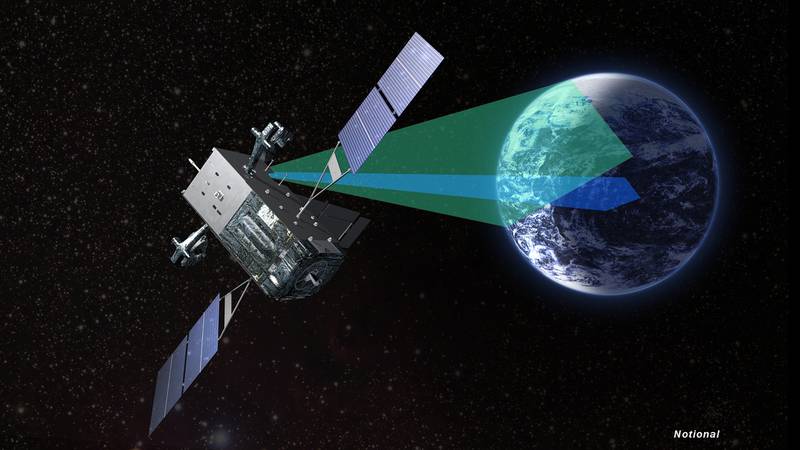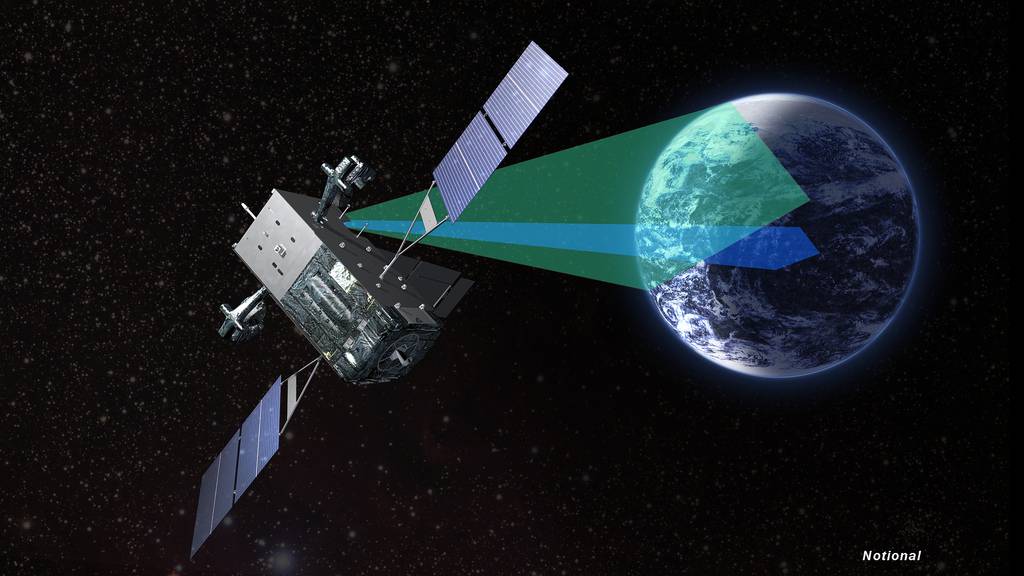Raytheon has been selected to build FORGE, a new system to collect and fuse data from the military’s space-based missile warning sensors.
The Air Force awarded Raytheon a five year, $197 million contract to build the Future Operationally Resilient Ground Evolution (FORGE) Mission Data Processing Application Framework, the company announced Jan. 28.
RELATED

The new system will be able to ingest and fuse data from the Air Force’s main missile warning satellite system, the Space Based Infrared System (SBIRS) constellation, as well as its eventual replacement, Next Generation Overhead Persistent Infrared (Next Gen OPIR). Both satellite systems use on-board sensors to detect the heat generated by a missile launch, giving the military a much needed heads up to any missile threat.
Along with BAE Systems and Booz Allen Hamilton, Raytheon was one of three companies selected through the Space Enterprise Consortium to build FORGE prototypes, with the understanding that the Air Force would eventually downselect to one contractor to build the system. According to Raytheon, the company built its prototype in less than a year by leveraging development work on several past programs, especially its Advanced Weather Integrated Processing System (AWIPS). The prototype is already capable of processing real data. The company credited DevSecOps with enabling them to move so quickly with the effort.
“We were free to innovate in any way, shape or form,” said Karen Casey, Raytheon’s chief engineer on the program. “We could bring innovative technical solutions from programs and projects inside our company and we could bring innovative commercial solutions (in from) outside our company and we could do it as fast as wanted.”
According to Casey, the contract allows Raytheon officials to complete their work on FORGE and transition it into operations.
The new system is being designed as an open architecture, meaning it will be able to incorporate data from other sensors. While prior military ground systems have been stovepiped — designed to work with one constellation but completely separated from any other constellations — FORGE will be open for future military satellites. Not only will the system presumably be able to work with other government satellites, it will also be able to work with civilian and environmental sensors.
RELATED

“The whole philosophy of this framework is to incorporate data from external sources,” Casey said. “Potentially, we could support ground radars. Potentially, we could support environmental ground based radars like tsunami buoys.”
The key to the prototype development was the company’s work on AWIPS, said Casey, which was built to incorporate data regardless of sensor type.
“The priority is Next Gen OPIR. The priority is reaching back to legacy SBIRS,” said Casey. “But yes, we’re going to have a vision of being agnostic and generic. That’s our goal, and where the customer decides to take that is up to them.”
Raytheon leaders are excited about the possibilities.
“The U.S. government’s global satellite network produces a constant flood of data — petabytes and petabytes of it every day,” said Dave Wajsgras, president of Raytheon Intelligence and Information Systems, in a statement. “The Air Force wants to open that network up so they can use as much of that data as possible. That’s a huge transformation not just for the service, but for the whole government.”
That open architecture also means third parties will be able to design applications for FORGE, allowing it to be repurposed for other missions. For example, the infrared sensor data produced by SBIRS and Next Gen OPIR to detect missile launches can also be used to track wildfires, monitor volcanic activity, and for a whole slew of unforeseen applications that could be used by first responders and researchers.
“The framework’s going to allow these new uses of this data. We’re going to be able to unlock it, effectively, and make it available for all these new uses,” said Casey.
The company will allow third party application developers to work with them throughout the next five years, meaning those applications will be ready to go as soon as the system is operational.
Casey said the company is meeting with the Air Force next week to finalize the projects development schedule.
Nathan Strout covers space, unmanned and intelligence systems for C4ISRNET.








